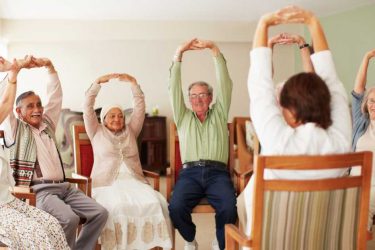Staying active in old age is more than a lifestyle choice; it’s a key ingredient for maintaining physical health and mental well-being. As we age, our bodies and minds face new challenges, and keeping them engaged through various activities can significantly improve our quality of life. This comprehensive guide offers practical advice for seniors and their families on how to remain active and healthy in later years.
Understanding the Benefits of Staying Active: Remaining physically active as we age is crucial. It helps prevent diseases such as arthritis, heart disease, and diabetes. More than that, it also combats depression and enhances cognitive function. Therefore, maintaining an active lifestyle can lead to a longer, healthier life.
Physical Activities for Seniors: Starting with physical activities, walking is perhaps the most accessible form of exercise for seniors. It’s low-impact, can be done almost anywhere, and the intensity can easily be adjusted to fit one’s health conditions and physical capabilities. Swimming and water aerobics are other excellent options, offering cardiovascular benefits without putting stress on the joints. Yoga, too, is highly beneficial as it combines physical movement with breath control and meditation, aiding both mental and physical health.
Social Activities to Keep Engaged: Social interactions play a vital role in mental health, especially as we age. Engaging in group activities not only helps maintain physical fitness but also provides valuable social interaction. Joining a walking group or participating in group fitness classes at local community centers can keep one socially active while promoting physical health. Additionally, many community centers and libraries offer group classes that cater specifically to seniors, providing a safe and supportive environment for staying active and making new friends.
Mind-Stimulating Activities: Keeping the mind active is just as important as engaging the body. Activities like puzzles, reading, and card games help stimulate the brain and can reduce the risk of cognitive decline. Moreover, learning new skills such as a musical instrument, a new language, or crafting can provide mental stimulation and a sense of accomplishment.
The Role of Technology in Staying Active: Technology offers a myriad of tools to help seniors stay active. Fitness trackers can monitor steps, heart rate, and even sleep patterns, helping seniors maintain an active lifestyle safely. Online platforms provide access to exercise classes tailored for seniors, yoga sessions, and even cognitive games designed to improve mental function.
Nutrition and Hydration for Active Seniors: An active body needs proper fuel. For seniors, a balanced diet rich in fruits, vegetables, lean proteins, and whole grains is crucial. Staying hydrated is equally important, as dehydration can lead to dizziness and other health issues. Nutritional needs vary by individual, so consulting with a healthcare provider for a personalized plan is recommended.
Overcoming Common Barriers: Many seniors face barriers to staying active, from physical limitations to lack of motivation. Addressing these barriers head-on, recognizing personal limits, and setting achievable goals can help. For those worried about injury, consulting with a physical therapist or a fitness professional who can tailor activities to individual capabilities can be invaluable.
Setting Realistic Goals: Goal setting is vital for maintaining motivation. Seniors should set realistic, achievable goals that provide a sense of accomplishment. Whether it’s walking for 15 minutes a day or completing a puzzle each week, small achievements can lead to significant health benefits over time.
Staying active in old age is crucial for maintaining health and independence. With a variety of physical, social, and mental activities available, seniors have many options to choose from. Technology and community resources further support their journey towards a healthier lifestyle. Ultimately, staying active allows seniors not only to enhance their quality of life but also to enjoy it more fully.
As seniors explore ways to stay active, they often need support and guidance tailored to their individual needs and capabilities. This is where KindredCare becomes an invaluable resource. KindredCare provides a platform where seniors and their families can connect with qualified caregivers who are not just trained in the nuances of senior care but are also passionate about making a positive impact in the lives of the elderly. These caregivers can assist with physical activities, accompany seniors to social events, or help them engage in mental exercises, ensuring that the activities are not only beneficial but also safe and enjoyable.
Moreover, KindredCare understands the importance of matching the right caregiver with the right senior. Their use of advanced matching algorithms ensures that each senior is paired with a caregiver who best matches their activity interests, personality, and healthcare needs, which is crucial for encouraging an active lifestyle. Whether it’s a caregiver who can lead a senior through a series of yoga poses, one who is an avid reader, or someone who knows how to keep the mind sharp with various cognitive activities, KindredCare makes these connections possible.
In addition to providing caregiver matching, KindredCare offers support systems and resources that help seniors navigate the challenges of staying active as they age. From educational materials about different types of activities to personalized care plans, KindredCare aims to empower seniors to lead vibrant, active lives. They also provide ongoing training and support for caregivers, ensuring they are well-equipped to handle the unique challenges of caring for active seniors.
While seniors have many avenues to help them stay active and engaged, KindredCare stands out as a partner that supports both their physical and mental wellness journeys. Through its comprehensive services and personalized care approach, KindredCare not only helps seniors stay active but also enriches their later years with quality care and meaningful interactions.



